Are you wondering what a complete website audit means? Even you may have an interest in knowing the difference between a website audit and an SEO audit.
What is Website SEO Audit?
A complete website audit or SEO audit is a thorough analysis of all aspects of a website, including its structure, content, performance, and accessibility.
The goal of a complete website audit is to identify any technical, on-site, or off-site issues that could be affecting the website’s search engine rankings, user experience, and overall performance, and to provide recommendations for improving these areas.
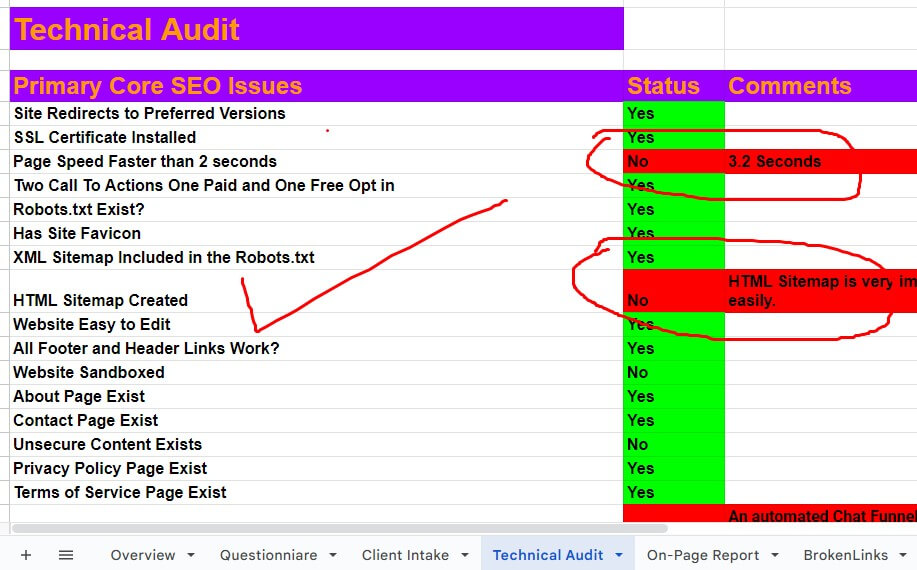
A complete site audit normally includes the following:
Technical audit:
This includes an analysis of the website’s coding, hosting, and security, as well as an assessment of the website’s load speed, mobile compatibility, and overall technical structure.
On-page optimization:
This includes an analysis of the website’s content, meta tags, keyword usage, images, and other on-page elements.
Link audit:
Link audit includes an analysis of the website’s backlinks and internal linking structure to determine if they are helping or hindering the website’s search engine performance.
Analytics review:
This includes an analysis of the website’s traffic and search engine performance, as well as an assessment of the website’s conversion rate and overall performance.
Content audit:
Content audit includes an analysis of the website’s content to determine if it is optimized for search engines and if it can be improved, as well as an assessment of the website’s overall content strategy.
Competitor analysis:
This includes an analysis of the website’s competitors to determine if there are any areas where the website is falling behind and what can be done to improve the website’s competitiveness.
Recommendations for complete website audit:
Based on the results of the Complete Website Audit, the Best SEO Expert in BD will provide recommendations for improving the website’s performance and visibility in search engines. These recommendations may include changes to the website’s technical elements, on-page optimization, backlink structure, and overall strategy.
See the Complete website audit report of a USA client Anthony Collova done by SEO Guru BD
SEO Audit Tools:
There are many SEO audit tools available that can help you analyze and optimize your complete website audit for search engines. Some of the most popular SEO audit tools include:
Google Search Console:
This is a free tool from Google that provides information about how your website is performing in Google search results. It includes data about your website’s traffic, crawl errors, and backlinks, as well as information about the keywords that are driving traffic to your site.
Ahrefs:
It provides extensive data about your website’s backlinks, keywords, and rankings. It includes a site explorer tool that can be used to analyze your website’s backlinks, as well as a keyword explorer tool that can be used to research keywords and analyze their performance in search results.
SEMrush:
SEMrush is also a paid tool that provides data about your website’s performance in search engines, including data about your website’s rankings, traffic, and backlinks. It also includes a site audit tool that can be used to analyze your website’s technical elements and on-page optimization.
Moz Pro:
Moz Pro provides data about your website’s performance in search engines, including data about your website’s rankings, traffic, and backlinks. It also includes a site audit tool that can be used to analyze your website’s technical elements and on-page optimization.
Screaming Frog SEO Spider:
This is an outstanding paid tool that crawls websites to Complete website audits and identifies technical issues and on-page optimization opportunities. It includes a site auditor tool that can be used to analyze your website’s technical elements and on-page optimization.
DeepCrawl:
DeepCrawl is a paid website crawling tool that provides website owners with detailed data and insights about their website’s structure, including information about URLs, images, links, and on-page elements.
Technical Audit:
Technical Audit
A technical audit is an in-depth analysis of a website’s technical elements to determine if they are optimized for search engines and if they can be improved. Technical audits are the most vital part of the Complete Website Audit by SEO Guru BD that typically include the following
elements:
Website structure:
This includes an analysis of the website’s URL structure, navigation, and overall organization to determine if it is optimized for search engines and can be improved.
Coding and HTML:
It includes an analysis of the website’s coding, including the use of HTML tags, CSS, and JavaScript, to determine whether it is optimized for search engines and if there is any scope to improve it.
Server and hosting:
Technical audit analysis of the website’s hosting environment, including the type of server and hosting provider.
Mobile compatibility of a complete website audit:
This includes an analysis of the website’s mobile compatibility to determine if it is optimized for search engines and if it can be improved.
Security:
This includes an analysis of the website’s security, including the use of SSL certificates and secure connections, to determine if it is optimized for search engines and if it can be improved.
Page speed:
This includes an analysis of the website’s load speed to determine if it is optimized for search engines and if it can be improved.
Sitemap and robots.txt:
This includes an analysis of the website’s sitemap and robots.txt files to determine if they are optimized for search engines and if they can be improved.
On-Page Audit:
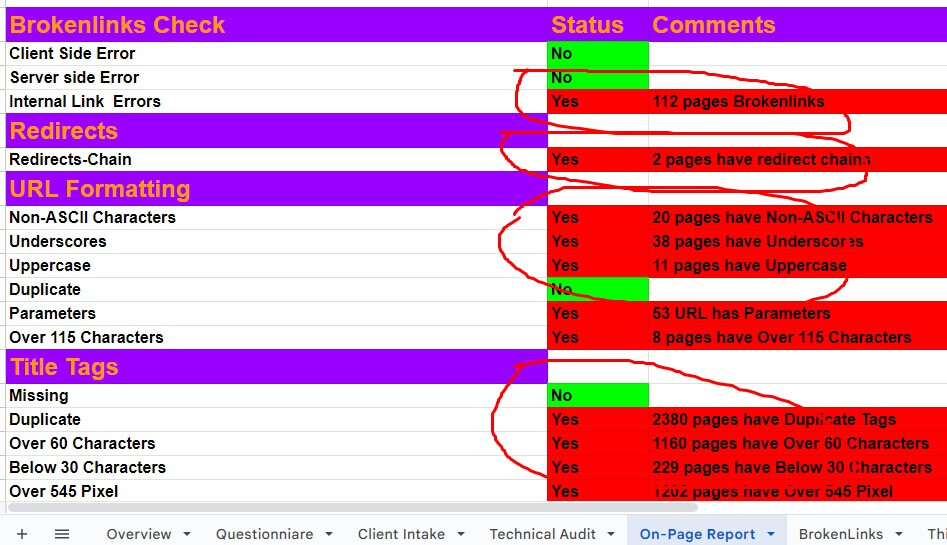
The Best Digital Marketing Expert in Bangladesh conducts an on-page audit that analyzes the content and elements on a website to determine if they are optimized for search engines and if they can be improved. On-page audits typically include the following elements:
Content quality:
This includes an analysis of the website’s content, including the quality and relevance of the content, to determine if it is optimized for search engines and if it can be improved.
Keyword optimization:
Complete Website Audit provides an analysis of the website’s keyword usage, including the use of keywords in the content, titles, descriptions, and other elements, to determine if it is optimized for search engines and if it can be improved.
Header tags:
This includes an analysis of the website’s use of header tags (H1, H2, H3, etc.) to determine if they are optimized for search engines and if they can be improved.
Image optimization:
Image optimization of a complete website audit includes an analysis of the website’s use of images, including the use of alt tags, file names, and image size, to determine if they are optimized for search engines and if they can be improved.
Internal linking:
This includes an analysis of the website’s internal linking structure to determine if it is optimized for search engines and if it can be improved.
Meta descriptions and titles:
This includes an analysis of the website’s use of meta descriptions and titles to determine if they are optimized for search engines and if they can be improved.
URL structure:
This includes an analysis of the website’s URL structure to determine if it is optimized for search engines and if it can be improved.
Link Audit of a site:
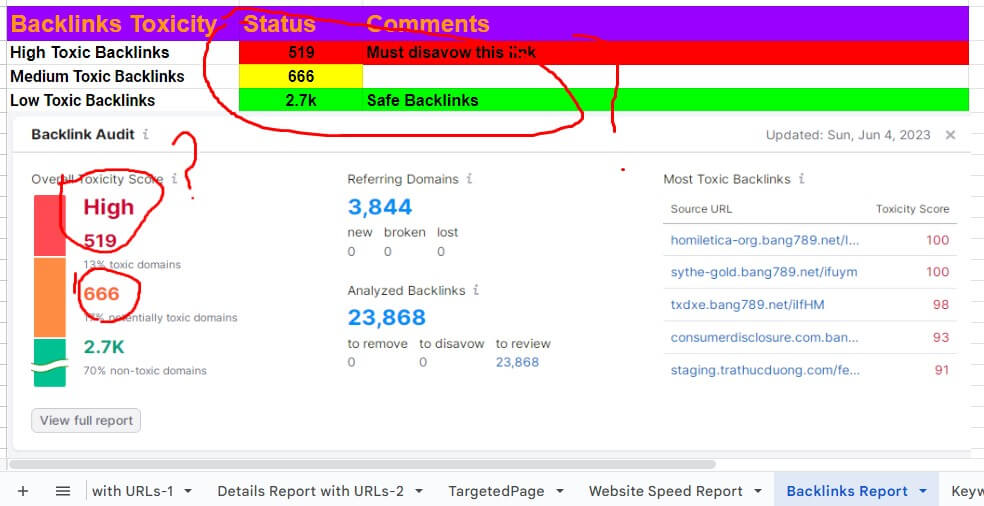
A link audit is an important part of a complete website audit Checklist that analysis the links that point to and from a website to determine if they are optimized for search engines and if they can be improved. Link audits typically include the following elements:
Backlink analysis:
This includes an analysis of the website’s backlinks, including the quality and relevance of the linking websites, to determine if they are optimized for search engines and if they can be improved.
Link quality:
This includes an analysis of the website’s links, including the quality and relevance of the linked-to websites, to determine if they are optimized for search engines and if they can be improved.
Anchor text:
This includes an analysis of the website’s use of anchor text, including the relevance and variety of the anchor text, to determine if it is optimized for search engines and if it can be improved.
Link sources:
This includes an analysis of the sources of the website’s links, including the quality and relevance of the linking websites, to determine if they are optimized for search engines and if they can be improved.
Linking domains:
This includes an analysis of the domains that link to the website, including the quality and relevance of the linking domains, to determine if they are optimized for search engines and if they can be improved.
Linking pages:
This includes an analysis of the pages that link to the website, including the quality and relevance of the linking pages, to determine if they are optimized for search engines and if they can be improved.
Analytics Review of the Audit:
An analytics review of a Complete Website Audit is an analysis of the website’s analytics data to determine if it is providing valuable insights into the website’s performance and if it can be improved. Analytics reviews typically include the following elements:
Traffic sources:
This includes an analysis of the website’s traffic sources, including sources of the website’s organic traffic, referral traffic, and direct traffic, to determine if they are providing valuable insights into the website’s performance and if they can be improved.
User behavior:
This includes an analysis of the website’s user behavior, including the average time on site, bounce rate, and pages per session, to determine if they are providing valuable insights into the website’s performance and if they can be improved.
Conversion analysis:
This Complete Website Audit includes an analysis of the website’s conversion rate, including the number of conversions and the conversion rate by traffic source and user behavior, to determine if it is providing valuable insights into the website’s performance and if it can be improved.
Goal tracking:
This includes an analysis of the website’s goal tracking, including the number of goals completed and the conversion rate by a goal, to determine if it is providing valuable insights into the website’s performance and if it can be improved.
E-commerce tracking:
This includes an analysis of the website’s e-commerce tracking, including the number of transactions and the total revenue generated, to determine if it is providing valuable insights into the website’s performance and if it can be improved.
Content Audit of the Site:
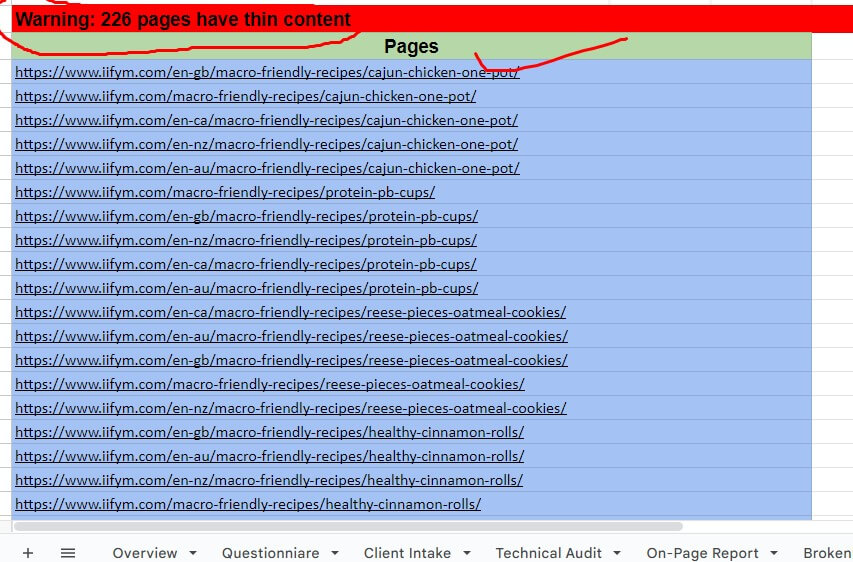
A content audit is a vital part of a complete website audit for analysis of the website’s content to determine if it is optimized for search engines and if it can be improved. Content audits typically include the following elements:
Keyword analysis:
This includes an analysis of the website’s use of keywords, including the relevance and variety of the keywords, to determine if they are optimized for search engines and if they can be improved.
Content relevance:
This includes an analysis of the website’s content, including the relevance of the content to the website’s target audience, to determine if it is optimized for search engines and if it can be improved.
Content quality:
This includes an analysis of the website’s content, including the quality and originality of the content, to determine if it is optimized for search engines and if it can be improved.
Content structure:
This includes an analysis of the website’s content structure, including the use of headings, subheadings, and other formatting elements, to determine if it is optimized for search engines and if it can be improved.
Image optimization:
This includes an analysis of the website’s use of images, including the optimization of the images for search engines and the use of alt tags, to determine if it is optimized for search engines and if it can be improved.
Video optimization:
This includes an analysis of the website’s use of videos, including the optimization of the videos for search engines and the use of video descriptions and transcripts, to determine if they are optimized for search engines and if they can be improved.
Competitor Analysis of a Website:
A competitor analysis of a complete website audit is an analysis of the websites of the business’s competitors to determine how the business’s website compares and if it can be improved. Competitor analysis typically includes the following elements:
Competitor identification:
This includes the identification of the business’s top competitors, based on factors such as industry, target audience, and keywords.
Website analysis:
A complete Website Audit includes an analysis of the websites of the business’s competitors, including the structure, content, and functionality of the websites, to determine how they compare to the business’s website and if the business’s website can be improved.
Keyword analysis:
This includes an analysis of the keywords used by the business’s competitors, including the keywords they are targeting and the ranking of their websites for those keywords, to determine how the business’s website compares and if it can be improved.
Backlink analysis:
This includes an analysis of the backlinks of the business’s competitors, including the quantity and quality of the backlinks, to determine how the business’s website compares and if it can be improved.
Content analysis:
This includes an analysis of the content of the business’s competitors, including the quality and relevance of the content, to determine how the business’s website compares and if it can be improved.
Social media analysis:
This includes an analysis of the social media presence of the business’s competitors, including the number of followers, engagement, and content strategy, to determine how the business’s website compares and if it can be improved.
Recommendations:
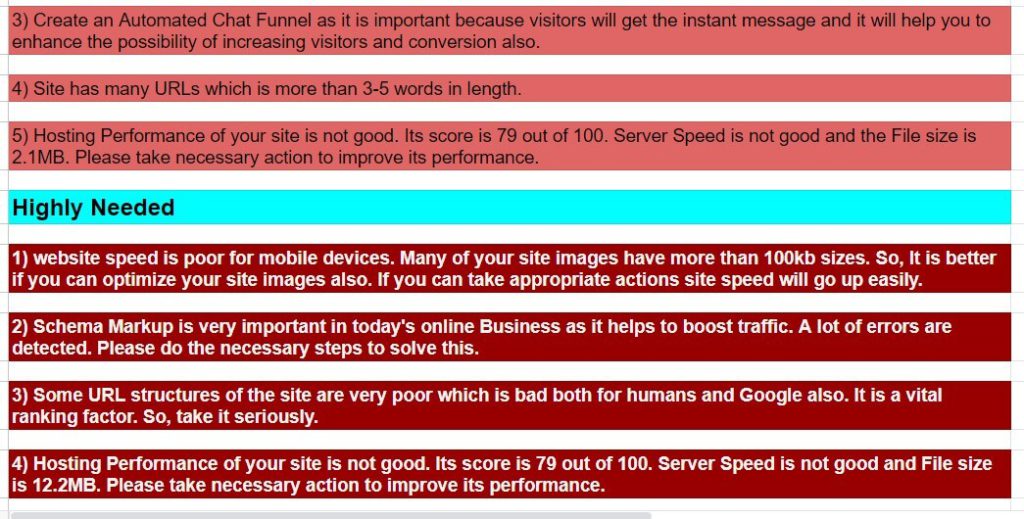
The recommendations of a complete website audit are a list of suggestions for improving the website’s performance in search engines, usability, and overall user experience.
These recommendations are an important part of a complete website audit and can help improve the website’s performance in search engines, usability, and overall user experience. By following these recommendations, businesses can improve their website’s visibility and attract more qualified traffic, leading to increased conversions and sales.
How to Conduct a Complete Website Audit?
Conducting a complete website audit by the Best WordPress SEO Expert in Bangladesh can help you identify areas for improvement on your website so that you can optimize it for search engines and improve its performance. Here are the steps for conducting a website audit:
Gather data:
Collect data about your website, including traffic data from analytics tools like Google Analytics, data about your website’s backlinks, and data about your website’s on-page elements (e.g. meta descriptions, header tags, etc.).
Crawl the website:
Use a website crawling tool like Screaming Frog or DeepCrawl to analyze your website’s structure, including its URLs, images, and links.
Evaluate the website’s technical elements:
Check the website’s coding, server setup, and page speed to ensure that they are optimized for search engines.
Review on-page elements:
Check the website’s content, meta descriptions, header tags, and other on-page elements to ensure they are optimized for search engines.
Analyze the website’s backlinks:
Review the website’s inbound and outbound links to ensure they are high quality and are not harmful to the website’s search engine performance.
Evaluate the website’s mobile-friendliness:
Complete website audit Check the website’s mobile-friendliness to ensure it is optimized for visitors on mobile devices.
Create a report:
Create a report of your findings, including a list of recommendations for improvements to the website’s technical elements, on-page elements, backlinks, and mobile-friendliness.
Website SEO Audit Service:
Complete Site SEO audit services by SEO Guru BD typically include a comprehensive analysis of a website’s structure, content, coding, backlinks, and other technical elements, as well as a review of the website’s overall search engine performance. The service may also include recommendations for improvements to the website’s technical elements, on-page optimization, and overall search engine optimization strategy.
Some of the benefits of using a website SEO audit service include:
Improved search engine visibility:
By identifying and fixing technical issues and optimizing on-page elements, an website SEO audit can help improve a website’s visibility and ranking in search engine results pages (SERPs).
Increased traffic:
By improving a website’s search engine visibility, a Complete website SEO audit can lead to increased traffic to the website.
Better user experience:
By identifying and fixing technical issues, a website audit can help improve the user experience for visitors to the website.
Increased conversions:
By improving the website’s visibility and user experience, a site audit can lead to increased conversions and sales for a website.
Final Word:
In conclusion, a complete website audit is an important process for any website owner who wants to improve their website’s performance and visibility in search engines. By analyzing the website’s technical elements, on-page optimization, backlinks, and other factors, a website audit can help identify areas for improvement and provide valuable insights into how to optimize the website for search engines.
Whether you conduct the audit yourself or hire an SEO expert to do it for you, a website audit can provide valuable information that can help you make informed decisions about how to improve your website’s performance. However, it’s important to remember that a website audit is not a one-time process, but rather an ongoing process that should be repeated regularly to ensure that the website remains optimized for search engines.
So, if you’re looking to improve your website’s performance and visibility in search engines, a complete website audit is a valuable investment that can provide you with the information and insights you need to make informed decisions about how to optimize your website for search engines.
Some FAQs of Complete Website Audit:
What is a complete website audit?
A complete website audit is a comprehensive analysis of a website’s structure, content, and performance, aimed at identifying and fixing any technical issues that could be affecting its visibility, usability, and ranking in search engines.
Why is a website audit important?
A website audit is important because it helps you identify and resolve technical issues that can negatively impact your website’s search engine rankings, user experience, and overall performance. Regular website audits can also help you stay ahead of changes in search engine algorithms and user expectations.
What are some common issues identified in a website audit?
Common issues identified in a website audit include broken links, slow loading times, duplicate content, missing or incorrect meta tags, crawl errors, and mobile optimization issues.
How often should a website be audited?
It’s recommended to perform a website audit at least once a year, or more frequently if you’re making significant changes to your website or experiencing a decline in traffic or rankings.
Can a complete website audit be performed in-house or is it better to hire an expert?
A website audit can be performed in-house using various tools, but hiring an expert with experience in website optimization and a deep understanding of search engine algorithms can provide a more comprehensive and accurate analysis.
What are some of the tools used for website auditing?
Some popular tools used for website auditing include Google Search Console, SEMrush, Ahrefs, Moz, Screaming Frog, and GTmetrix.
What happens after a website audit is completed?
After a website audit is completed, you’ll receive a detailed report of the findings, along with recommendations for resolving any identified issues. The next step is to implement the recommended changes to improve your website’s performance.
